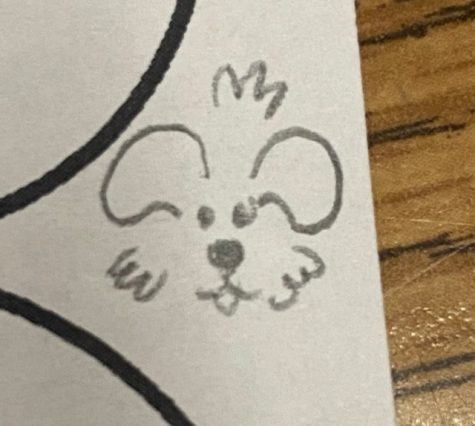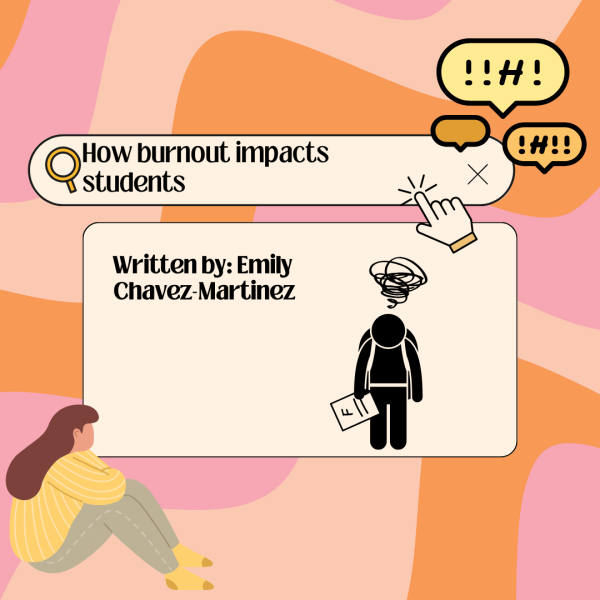The Benefits of Doodling
Whether you have a knack for creativity or just want to find ways to mend boredom, most students at some point during the school day find themselves sketching on worksheets or in notebooks, sometimes marking up the entire page with drawings.
Doodles can be complex and inventive, or it can just be some chicken scratch with no determined meaning. You don’t have to be artistically inclined to doodle, you can even be the most uncreative person in the world, it’s just a natural activity born from having access to absurd amounts of paper and pencils in a learning environment.

People tend to think of doodling as a distraction, something for those who either want to go into a field involving art or are uninterested, unmotivated students who find simple distractions from class instruction. In personal experience, teachers have noted on my graded assignments that they wished to see less of my doodles because they “worry it will negatively affect my focus”. Some have commented that I shouldn’t doodle next to my homework because it’s just another form of procrastination. This discouraged me, but I still found solace in drawing on my assignments and continued to scribble on any and all worksheets.
While it is true that doodling often stems as a distraction from work and instruction or even from disinterest in the content; it doesn’t necessarily hinder a student’s quality of work. In fact, there have been plenty of studies that suggest doodling helps to improve memory, focus, and complex thinking. 
Jackie Andrade, a professor and researcher in Psychology at the University of Plymouth, conducted a study where participants listened to a telephone call regarding the names of people who would be attending a party. Half of the participants were instructed to draw and shade circles and squares while listening to the call. They were all asked to recall the intel given by the phone call, and it was found to the surprise of the researchers, the participants asked to doodle had a better recollection of the names described by the automated voice than the non-doodling participants.
With these results, the researchers determined that the non-doodlers fell into a “default state” where inactivity in the brain allowed more room to daydream and lose focus. This suggests that drawing can help center the brain and help arouse more complex thinking to retain more information while also allowing people to settle their thoughts and pay more attention to detail. Focusing on simple sketches and small doodle tasks can keep the brain stimulated and therefore, attentive.


Reducing stress is another benefit born from doodling. According to the Sage Neuroscience Center, People who used drawing as a form of therapy to reduce stress had a reduction in their cortisol levels, a hormone that often appears when someone is stressed. A study done for the journal Art Therapy found that 75% of participants that were involved in creating art for 45 minutes had a lower cortisol level than before the study was conducted.
Allowing yourself to unwind through doodling can boost your mood and convey your feelings through a drawing. A stressful state of mind and frustration can be detrimental to your mental health and learning capabilities. Doodling can give you a sense of calm and mental restart when in a tough emotional block. Getting in touch with your emotions is easier when conveying it through the form of art, even if it’s just scribbles.

When a student laser-focuses on a task, they get stuck in their own heads and can only focus on what is presented in front of them. Being able to see what is being taught in the big picture is essential in applying our studies to life. Doodling gives people the opportunity to expand their creative minds and think outside of the box, connecting ideas and concepts through expression. For example, it has been observed by Gabriela Goldschmidt, an architecture professor, that students who doodle to refocus their thoughts during mental blocks while working on a project deliver the most creative and best quality work. This is because their drawings gave them inspiration from their own subconscious and allowed the students to feel contented with their work.

With all this in mind, students shouldn’t feel embarrassed or discouraged from the habit of doodling. If you are feeling anxious, bored, frustrated, or unfocused in class, try making a sketch or scribbling on a piece of paper, it doesn’t have to be Van Gough, doodling acts as an outlet for your emotions, a therapeutic method to get through the school day. You might even be surprised to find that your creativity stretches farther than you imagined!
Your donation will support the student journalists of Dakota High School. Your contribution will allow us to purchase equipment and cover our annual website hosting costs.

Alyssa Zerilli is a 12th grader at Dakota high school, She has experience in creative writing and enjoys water/snow skiing and drawing in her spare time. ...








